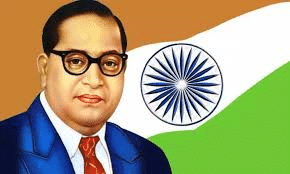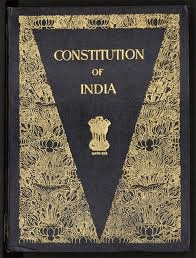SAQ for Chapter 10 The Constitution of India — An Introduction Class 7 Social Science NCERT
Important Questions1
Q1: Why was the Constitution of India adopted in 1949 but implemented in 1950?
Answer
The Constitution was adopted on 26 November 1949 but came into effect on 26 January 1950 to give time for the country to prepare for the transition from British rule. This also marked India’s Republic Day, symbolizing the country’s self-governance.
Constitution of India
SAQ
2
Q2: What was the role of the Constituent Assembly in shaping India’s Constitution?
Answer
The Constituent Assembly was responsible for drafting the Constitution of India. It included representatives from diverse regions and communities, ensuring the Constitution reflected India’s values of democracy, equality, and justice.
SAQ
3
Q3: What are the main components of the government structure as per the Indian Constitution?
Answer
The Indian Constitution establishes three main branches of government: the legislature (which makes laws), the executive (which implements laws), and the judiciary (which ensures laws are followed and settles disputes).
SAQ
4
Q4: How did the Indian Freedom Movement influence the Constitution?
Answer
The Indian Freedom Movement emphasized values like equality, justice, and freedom, which were incorporated into the Constitution. Leaders of the movement brought their experiences into the Constituent Assembly to create a fair and democratic system.
SAQ
5
Q5: How is the Constitution a "living document"?
Answer
The Constitution is a "living document" because it can be amended to meet the changing needs of the country. Amendments help adapt the Constitution to new challenges and evolving societal norms, keeping it relevant over time.
SAQ
6
Q6: What is the significance of the Preamble to the Constitution of India?
Answer
The Preamble sets out the fundamental values and objectives of the Constitution, including justice, liberty, equality, and fraternity. It guides the government and citizens in ensuring a fair and just society.
SAQ
7
Q7: What is the role of the President, Prime Minister, and judges in the Constitution?
Answer
The President is the ceremonial head of state, the Prime Minister leads the executive, and judges in the judiciary ensure laws are in line with the Constitution. These officials take an oath to uphold the Constitution.
SAQ
8
Q8: How does the Indian Constitution protect individual rights?
Answer
The Constitution provides Fundamental Rights that guarantee individual freedoms like equality, freedom of speech, and protection from exploitation. These rights are enforceable in court if violated by the government or others.
Constituent Assembly
SAQ
9
Q9: What are Directive Principles of State Policy (DPSP) and how do they guide the government?
Answer
DPSPs are guidelines for the government to create laws and policies aimed at improving the standard of living, ensuring justice, and protecting the environment. They are not legally enforceable but guide government actions.
SAQ
10
Q10: What changes have been made to the Constitution since its adoption?
Answer
The Constitution has been amended several times to address evolving issues. Notable changes include the addition of Fundamental Duties in 1976, the recognition of the Panchayati Raj System in 1992, and rights like the freedom to fly the national flag.
SAQ
11
Q11: How does the Indian Constitution ensure a separation of powers?
Answer
The Constitution ensures the separation of powers by clearly defining the roles and responsibilities of the legislature, executive, and judiciary. This system prevents any one branch from becoming too powerful and ensures fairness in governance.
SAQ
12
Q12: How does the Constitution promote equality in India?
Answer
The Constitution promotes equality by ensuring that all citizens are treated equally before the law, regardless of religion, caste, gender, or race. It guarantees equal opportunities and prohibits discrimination, upholding the values of justice and fairness.
SAQ
13
Q13: What are the main parts of the government as outlined in the Constitution?
Answer
The three main parts of the government are the legislature, executive, and judiciary. They each have separate functions to ensure fairness and accountability.
SAQ
14
Q14: How is the Constitution of India a "living document"?
Answer
The Constitution is a living document because it can be amended to meet the changing needs of society, as seen in the addition of Fundamental Duties and other changes over time.
SAQ
15
Q15: Why is the Constitution important for the citizens of India?
Answer
The Constitution protects citizens' rights, outlines their duties, and ensures fairness by setting rules for governance, making it essential for maintaining justice and equality.
SAQ
16
Q16: What role did the freedom struggle play in shaping the Indian Constitution?
Answer
The freedom struggle influenced the Constitution by promoting values like equality, justice, freedom, and fraternity, which were key principles in the document.
SAQ
17
Q17: How did the Indian Constitution borrow ideas from other countries?
Answer
The Indian Constitution incorporated ideas from various countries, like the USA’s independent judiciary, France’s liberty, equality, and fraternity, and Ireland’s Directive Principles.
SAQ